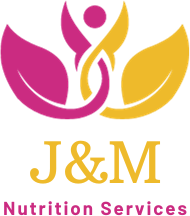Making baby food at home is a wonderful way to ensure your little one gets fresh,
nutritious meals. With advice from pediatric dietitians, this step-by-step guide will help
you create healthy and safe food for your baby. From choosing ingredients to storing
the finished product, we’ve got you covered.
The Nutritional Benefits of Homemade Baby Food
● Control Over Ingredients: Homemade baby food allows you to select fresh,
high-quality items, avoiding unnecessary additives, sugar, salt or
preservatives.
● Nutrient-Rich Meals: By preparing your baby’s food, you can ensure that each
meal is packed with essential nutrients that help to support their growth and
development.
● Customization: Adjust the ingredients to fit your baby’s dietary needs,
especially if they have food allergies or sensitivities.
Recommended Ingredients for Homemade Baby Food
● Single-Ingredient Purees: Start with simple foods like pureed peeled sweet
potatoes, avocado, peas, butternut squash, peeled apples, and bananas. You
can even begin with starches like rice and oatmeal.
● Variety for Balanced Diet: Include a mix of fruits, vegetables, and proteins like
lentils or chicken as your baby grows. Your dietitian can help with specialized
diets like vegan or vegetarian to ensure a good balance.
● Introducing Allergenic Foods: With guidance from a nutrition expert, you can
introduce allergenic foods such as peanut butter, eggs, and fish gradually and
monitor for reactions.
Knowing When Your Baby is Ready for Solid Foods
Before diving into the kitchen to make your first batch of puree, it’s essential to know
if your little one is ready. Here are some signs that your baby is ready for solid food,
typically noticeable around the 4-6 month mark:
● Sits with Minimal Support: Your baby can sit up with little to no assistance.
● Steady Head Control: Your baby can hold their head steady and upright.
● Interest in Food: Your baby shows curiosity about food, often watching you
eat with interest.
● Bringing Objects to Mouth: Your baby has developed the coordination to bring
toys or other objects to their mouth.
If you notice these signs, it’s a good time to start introducing solid foods.
Healthy and Nutritious Preparation Techniques
● Steaming: Retains the most nutrients, ideal for veggies like carrots, broccoli,
green beans, spinach, and zucchini.
● Boiling: Great for root vegetables like yuca, potatoes and sweet potatoes.
Peas, rice, oats, lentils, meats and beans should also be boiled. The excess
water after boiling can be used to puree and get the perfect consistency.
● Baking: Perfect for fruits like apples and pears, bringing out their natural
sweetness.
● Pureeing: After cooking, puree the food to a smooth consistency for younger
babies. Add water, breast milk, or formula to achieve the desired texture
appropriate for age.
Try our recipe for Chicken, Carrot, and Nut Puree.
Safety Tips for Making Baby Food at Home
● Hygiene: Always wash your hands, utensils, and surfaces before food
preparation to avoid contamination.
● Avoid Choking Hazards: Cut food into small pieces and avoid hard foods like
whole nuts or raw carrots.
● Proper Food Handling: Keep raw meats separate from other ingredients and
cook foods thoroughly to prevent foodborne illnesses.
Storing Homemade Baby Food Safely
● Freezing Purees: Freeze baby food in ice cube trays for easy portioning. This
method also helps you plan meals ahead. You can also use small glass jars
with lids to store.
● Labeling: Always label containers with the food type and preparation date.
Use within 1-2 months for optimal freshness.
● Defrosting: Thaw frozen purees in the refrigerator or using a warm water bath,
never at room temperature to avoid bacterial growth.
Consulting Pediatric Dietitians for Personalized Advice
● Professional Guidance: Consult with pediatricians or registered dietitians for
tailored advice, especially when introducing allergenic foods like nuts or eggs.
● Allergen Awareness: Pediatric dietitians can provide a food allergy list and
guide you on recognizing allergy signs in your baby.
● Balancing Nutrition: Ensure your baby’s diet covers all nutritional bases like
protein, fats, carbohydrates, vitamins, minerals, and continued use of
breastmilk and/or formula. This is especially important for babies with food
sensitivities or atopic dermatitis.
Conclusion:
Making baby food at home is a rewarding experience that ensures your baby gets
fresh, nutritious meals every day. By following these step-by-step tips from pediatric
dietitians, you can create healthy, delicious, and safe food for your little one as they
grow.

